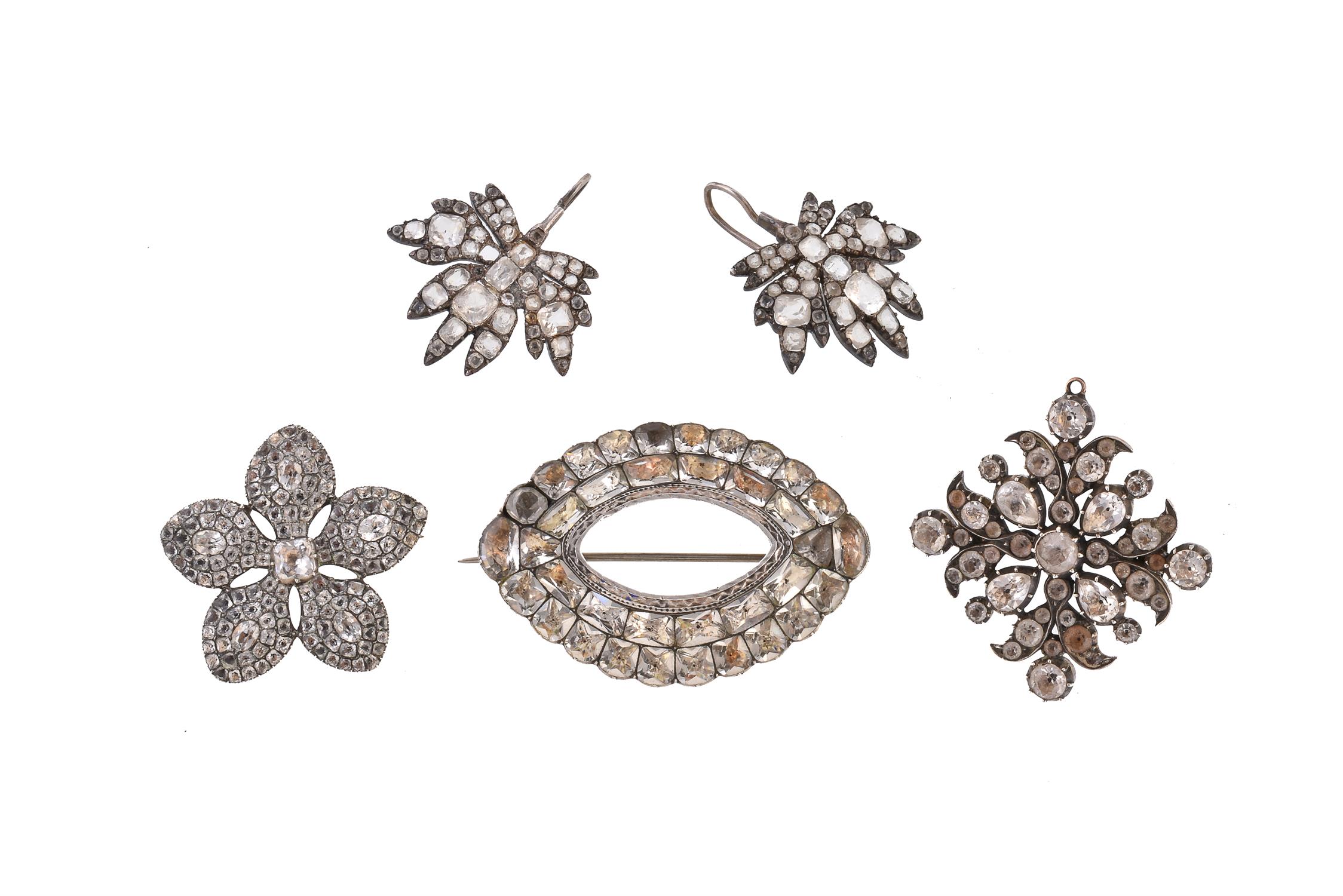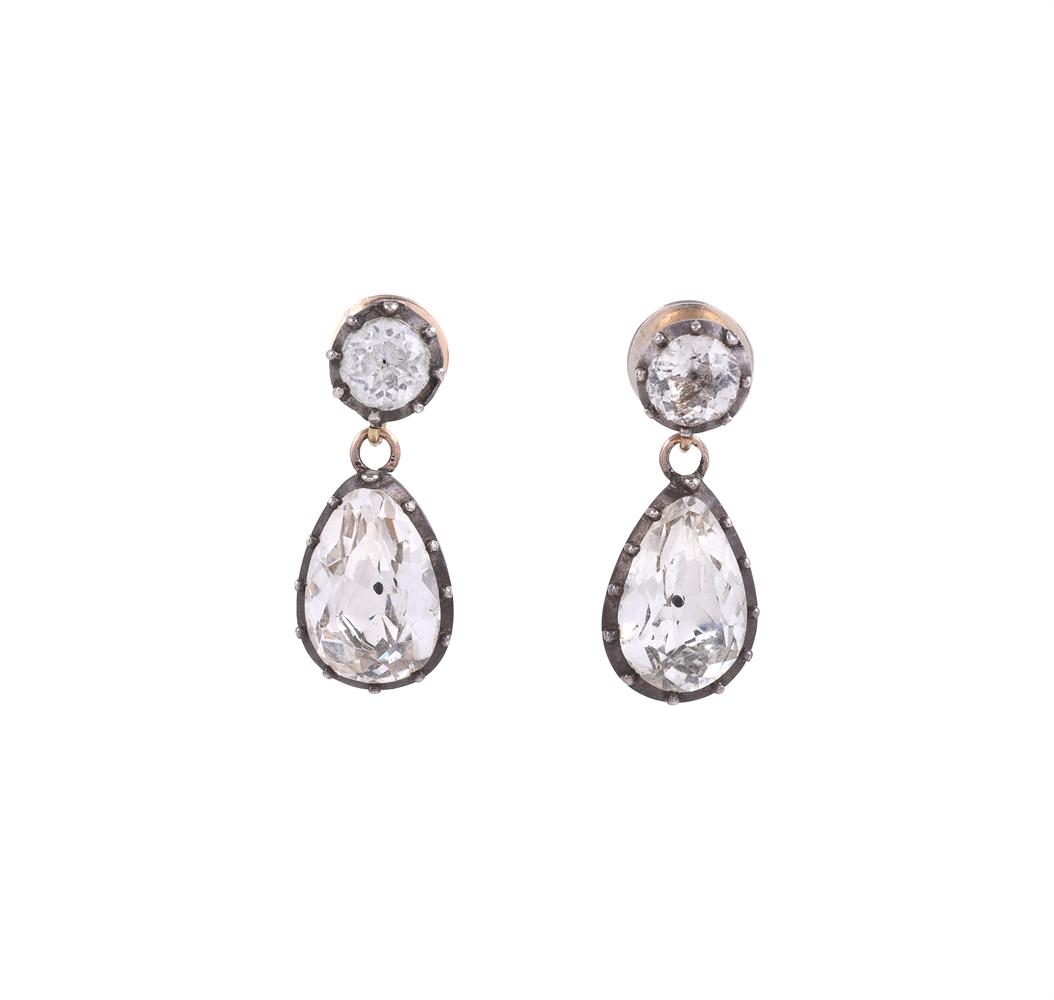A George III paste-set ormolu musical automaton clock circa 1780, signed by Peter Torckler of impressive scale in the form of an Asian elephant supporting a canopied howdah enclosing a figure of Atlas supporting an armillary sphere, the pagoda surmounted by a foliate and painted finial supporting a bejewelled counter-rotating 'Catherine wheel' topped with a pineapple, the elephant, finely chased, in two sections, enclosing one movement, its back draped with a blanket hung with jewelled pearl fringes, the elephant stands upon a finely worked rockwork base, mounted with flowers and rosette form covers enclose the winding apertures, inset to the front with an enamel clock dial with roman numerals and a red and clear jewelled bezel, the reverse set with another dial for selecting one of the six tunes (Gavot, Song, Jigg, Gavot, Minuet and Dance) the mechanism for which is enclosed in the lower section which is painted on metal with landscapes and mounted with ormolu rockwork, bridges, pavilions, pagodas and windmills with turning elements and enclosing glass 'waterfall' rods to all sides, with trophy panels to the canted angles and a burnished and leaf-cast plinth with pierced Chinese fret and anthemia aprons, supported to the corners by seated Chinese figures. The elephant demonstrates four mechanical movements every three hours which run simultaneously in addition to the spinning of the jewelled sections on the finial, the twisting of the glass 'waterfall' rods and the movement of the wheels and windmills on the base. The elephants movements consist of the movement up and down and rotation of the trunk, flapping of the ears a swishing of the tail and a rolling of the blue and grey painted eyes from side to side. These movements can also be actioned by pulling of the cord at the rear left foot of the elephant or in conjunction with any of the six musical tunes operated by pushing a button in the underside of the base. The pineapple finial and painted copper panels to the finial, the jewelled whirly-gig and bezels, winding covers, pearl fringes and pierced aprons to the two long sides and one short side replacements post the 2002 sale, with three plugged holes to the elephants head possibly suggesting that there was originally a figure seated at this point. The clock movement with three chain fusees, the verge escapement with reinstated knife-edge pendulum, striking the hours on a bell and playing one of six tunes on a carillon of ten bells with twelve hammers at each hour or at will. An attached fusee movement operating the glass rod simulated waterfalls and base automata in conjunction with the music. A large fusee movement within the body of the elephant operating the upper automaton features. 102 cm. high, 50cm. wide, 29.5cm. deep; 3ft. 4in., 1ft. 7¾in., 11¾in.
A George III paste-set ormolu musical automaton clock circa 1780, signed by Peter Torckler of impressive scale in the form of an Asian elephant supporting a canopied howdah enclosing a figure of Atlas supporting an armillary sphere, the pagoda surmounted by a foliate and painted finial supporting a bejewelled counter-rotating 'Catherine wheel' topped with a pineapple, the elephant, finely chased, in two sections, enclosing one movement, its back draped with a blanket hung with jewelled pearl fringes, the elephant stands upon a finely worked rockwork base, mounted with flowers and rosette form covers enclose the winding apertures, inset to the front with an enamel clock dial with roman numerals and a red and clear jewelled bezel, the reverse set with another dial for selecting one of the six tunes (Gavot, Song, Jigg, Gavot, Minuet and Dance) the mechanism for which is enclosed in the lower section which is painted on metal with landscapes and mounted with ormolu rockwork, bridges, pavilions, pagodas and windmills with turning elements and enclosing glass 'waterfall' rods to all sides, with trophy panels to the canted angles and a burnished and leaf-cast plinth with pierced Chinese fret and anthemia aprons, supported to the corners by seated Chinese figures. The elephant demonstrates four mechanical movements every three hours which run simultaneously in addition to the spinning of the jewelled sections on the finial, the twisting of the glass 'waterfall' rods and the movement of the wheels and windmills on the base. The elephants movements consist of the movement up and down and rotation of the trunk, flapping of the ears a swishing of the tail and a rolling of the blue and grey painted eyes from side to side. These movements can also be actioned by pulling of the cord at the rear left foot of the elephant or in conjunction with any of the six musical tunes operated by pushing a button in the underside of the base. The pineapple finial and painted copper panels to the finial, the jewelled whirly-gig and bezels, winding covers, pearl fringes and pierced aprons to the two long sides and one short side replacements post the 2002 sale, with three plugged holes to the elephants head possibly suggesting that there was originally a figure seated at this point. The clock movement with three chain fusees, the verge escapement with reinstated knife-edge pendulum, striking the hours on a bell and playing one of six tunes on a carillon of ten bells with twelve hammers at each hour or at will. An attached fusee movement operating the glass rod simulated waterfalls and base automata in conjunction with the music. A large fusee movement within the body of the elephant operating the upper automaton features. 102 cm. high, 50cm. wide, 29.5cm. deep; 3ft. 4in., 1ft. 7¾in., 11¾in.












.jpg)


Try LotSearch and its premium features for 7 days - without any costs!
Be notified automatically about new items in upcoming auctions.
Create an alert